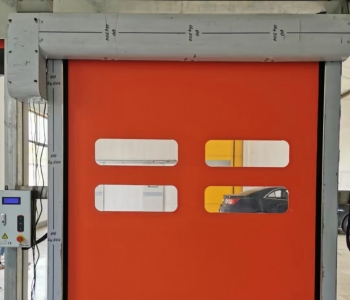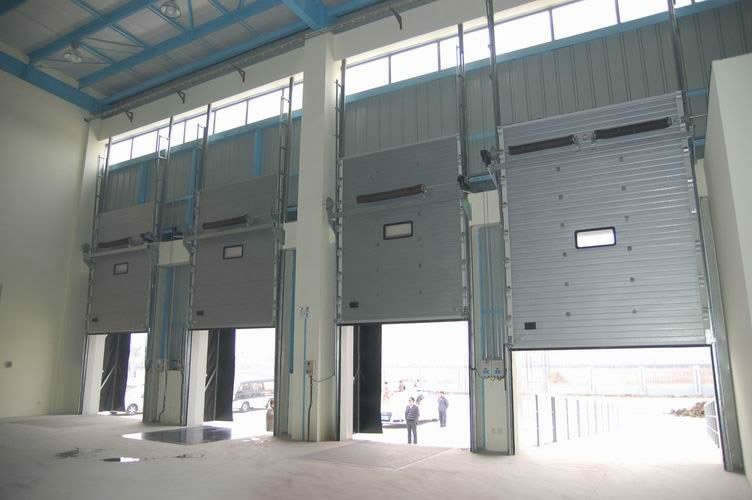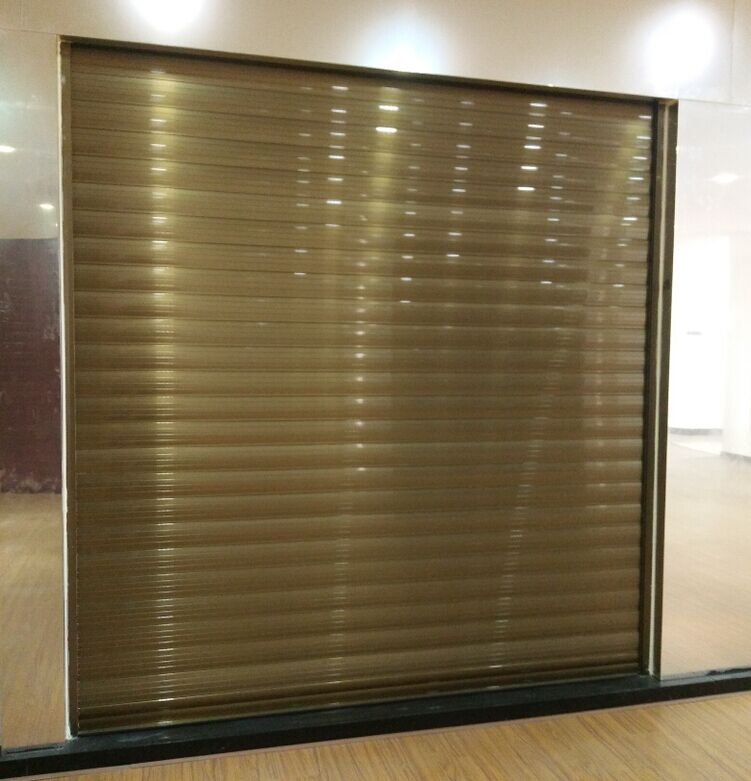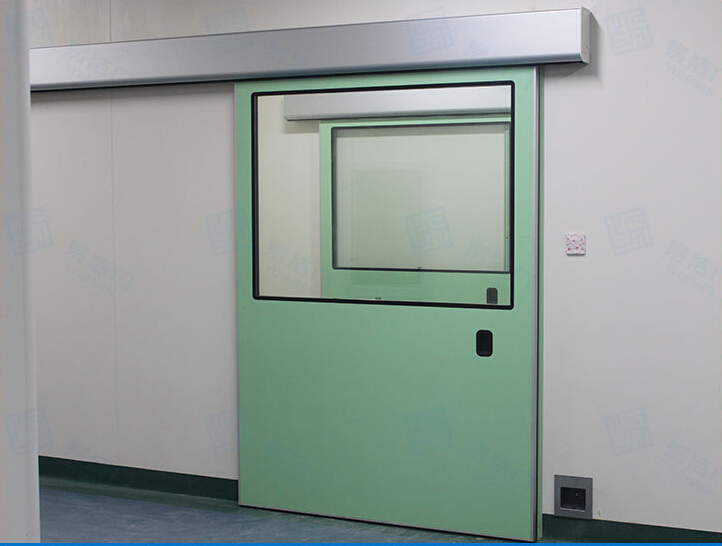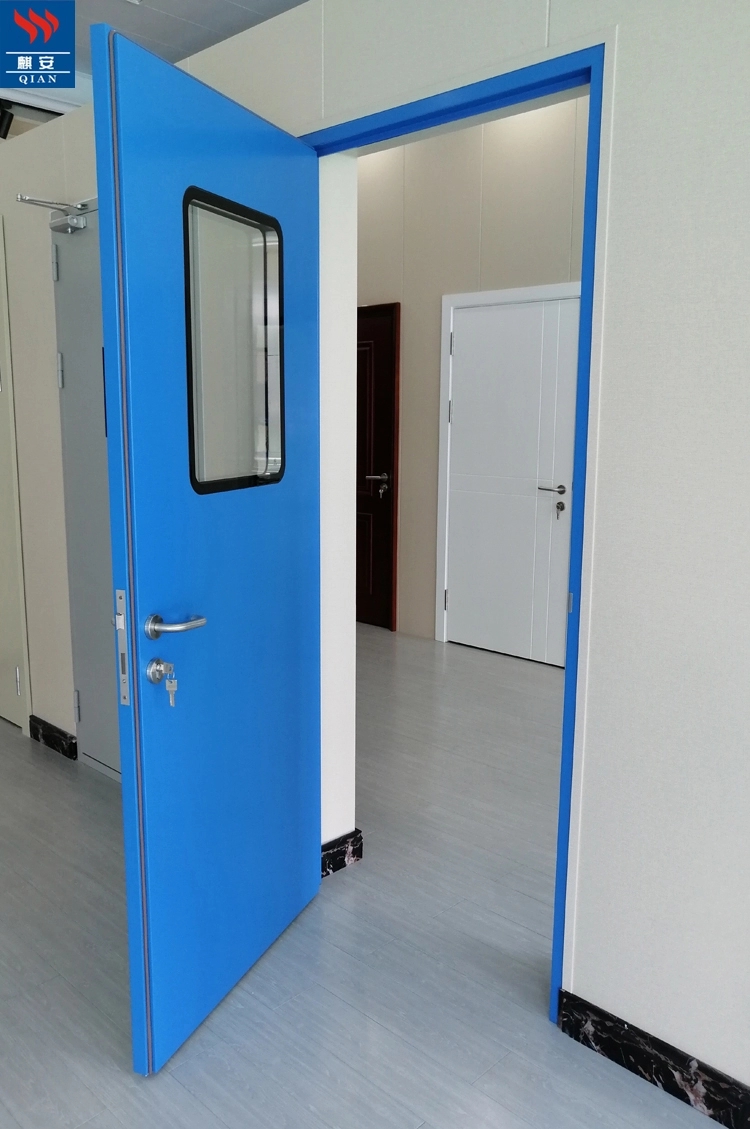High-Speed Door Industry: Technology, Applications, and Market Dynamics
1. Industry Overview
High-speed doors (HSDs), also known as rapid roller shutter doors, are critical components in modern industrial and commercial infrastructures. Designed for vertical operation with speeds ranging from 0.6 to 2.1 m/s, these doors optimize energy efficiency, enhance workflow productivity, and maintain controlled environments.
2. Technological Advancements
Drive and Control Systems
Intelligent Automation: Modern HSDs integrate PLCs and variable frequency drives (VFDs) to enable smooth acceleration/deceleration, reducing mechanical wear and noise. Rotary encoders achieve positioning accuracy within 0.3 mm, ensuring precise operation in high-traffic environments
Safety Mechanisms: Radar, infrared, and magnetic induction sensors prevent collisions, while emergency braking systems enhance operational safety. Some models feature automatic reset functions to minimize downtime
Material Innovations
Curtain Materials: PVC and PVDF films dominate due to their durability and environmental resistance. PVDF’s self-cleaning and UV-resistant properties make it ideal for cleanrooms, while reinforced PVC fabrics meet flame-retardant and corrosion-resistant standards
Structural Design: Rigid HSDs with aluminum or steel panels withstand wind loads up to Level 12 (Beaufort scale), catering to extreme conditions in cold storage and automotive manufacturing
Energy Efficiency
Advanced sealing systems reduce air exchange by 30–50%, critical for temperature-controlled facilities. Low-power motors and insulated materials align with global carbon-neutral initiatives
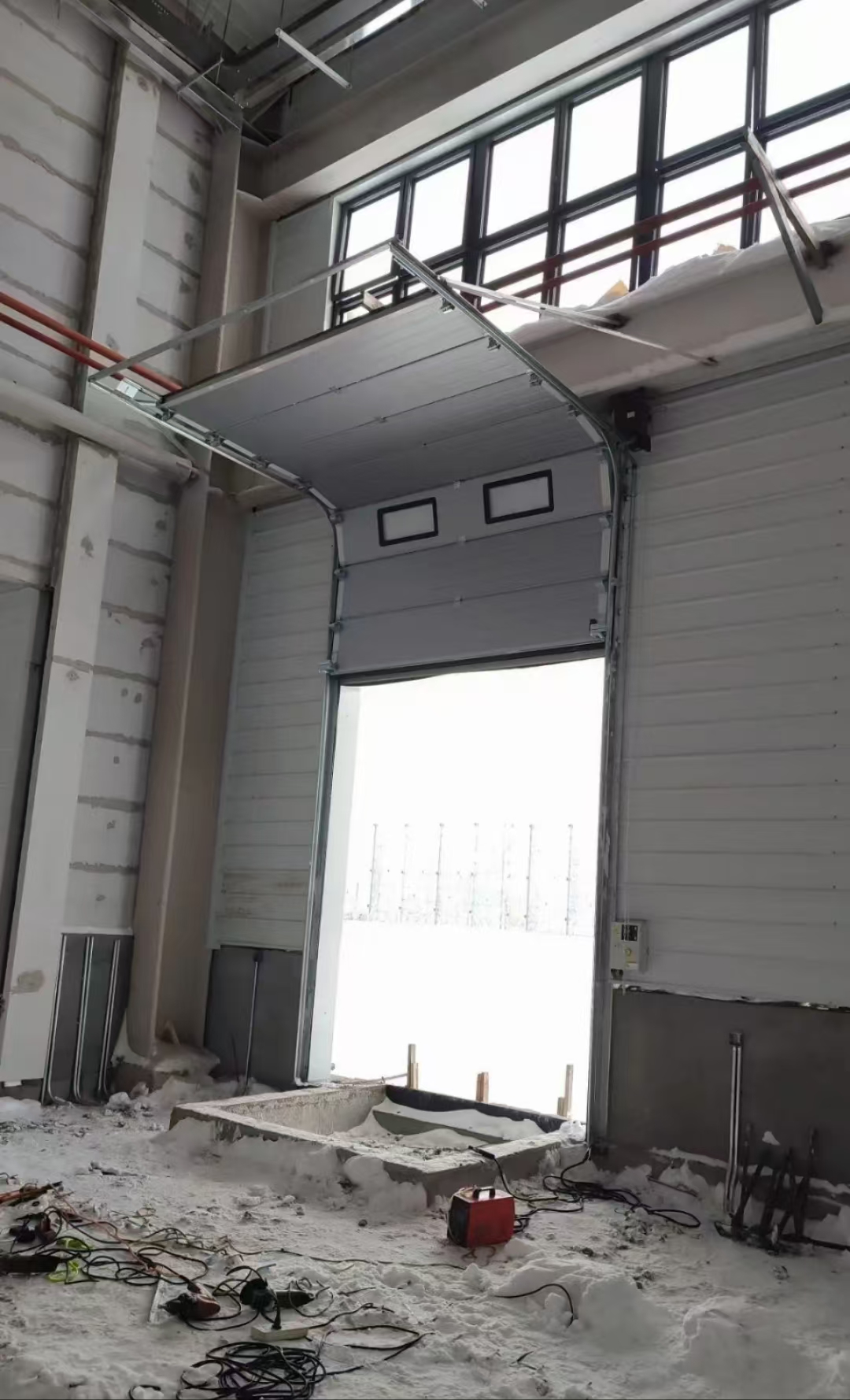
3. Key Applications
Industrial and Logistics
Warehousing: HSDs streamline cargo throughput in distribution centers while maintaining dust-free environments. Their rapid operation minimizes heat loss in cold chain logistics, reducing energy costs
Manufacturing: In automotive and electronics sectors, HSDs isolate production zones, preventing cross-contamination and supporting ISO Class 8 cleanroom standards
Healthcare and Food Processing
Pharmaceuticals: HSDs ensure sterile environments in drug manufacturing, complying with GMP regulations.
Food Safety: Airtight seals and anti-bacterial materials prevent pest infiltration and maintain hygiene in processing plants
Public Infrastructure
Subway stations, airports, and parking facilities utilize HSDs for efficient traffic management and noise reduction
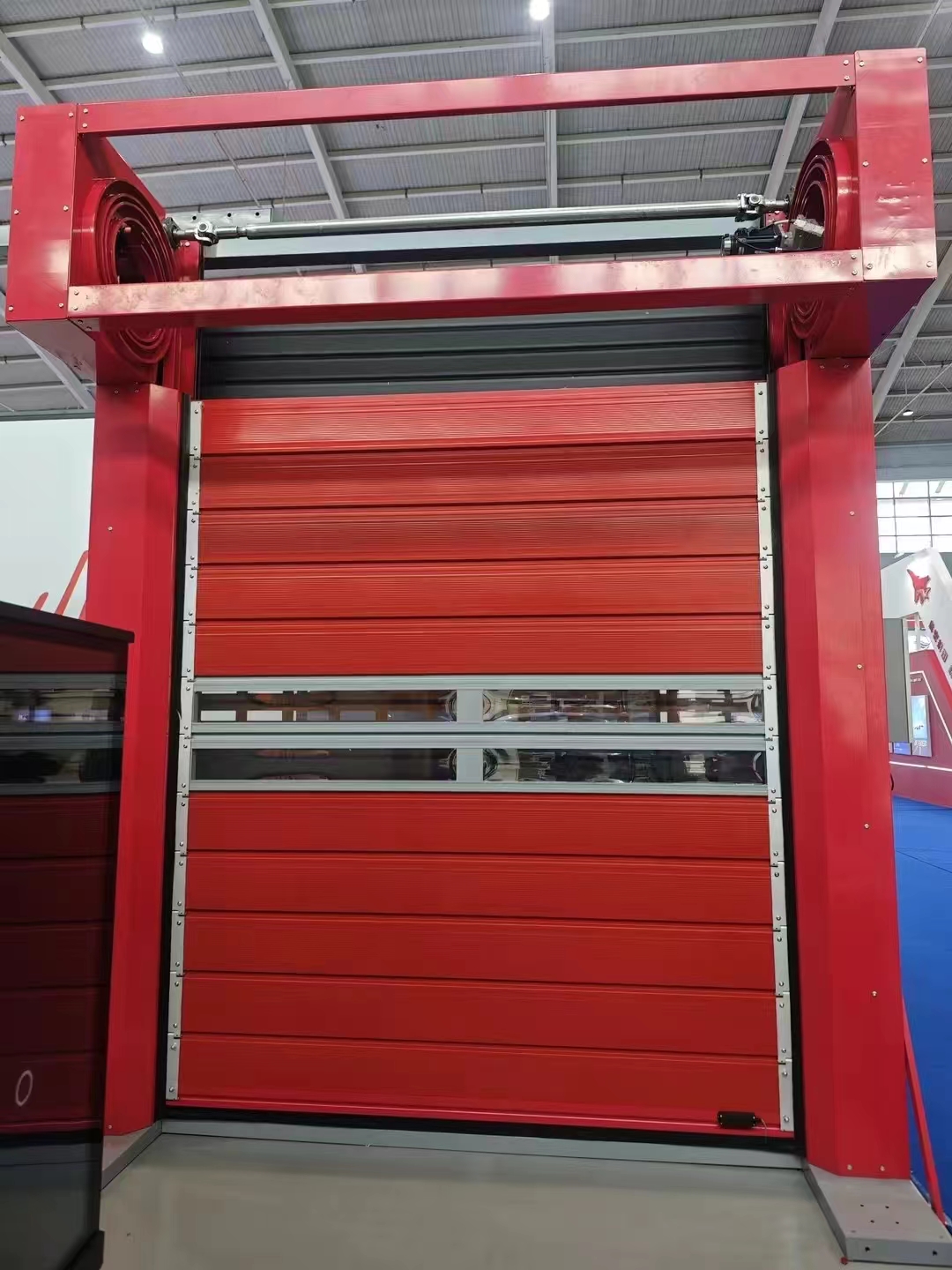
4. Market Trends and Drivers
Smart and IoT Integration
Remote monitoring, predictive maintenance, and multi-door synchronization enhance operational efficiency. AI-powered object recognition systems enable autonomous operation in high-traffic areas .
Sustainability Demands
Recyclable aluminum frames and non-toxic PVC fabrics align with circular economy principles. Energy-efficient designs reduce annual operational costs by 15–20% .
Customization and Globalization
Explosion-proof and humidity-resistant variants cater to niche markets like chemical plants. Chinese manufacturers, leveraging cost advantages, dominate Southeast Asian and European exports, achieving 15% annual growth
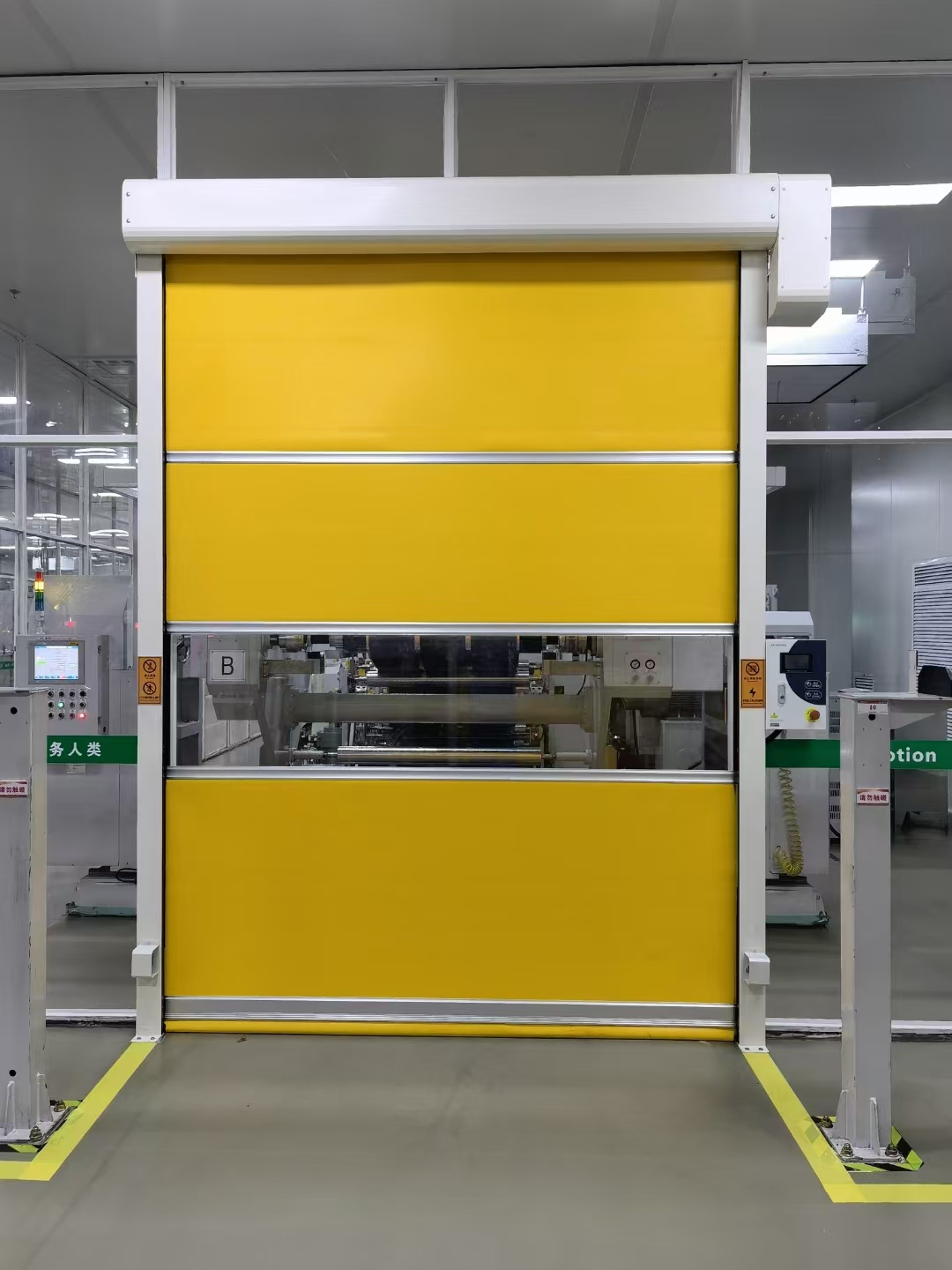
5. Challenges and Strategic Recommendations
Technical Bottlenecks
Reliance on imported encoders and precision components increases costs. Localizing R&D for critical parts is essential to improve affordability
Maintenance Complexities
High-frequency operation (500–800 cycles/day) accelerates wear on tracks and motors. Proactive maintenance protocols and modular designs can extend service life
Regulatory Compliance
Adherence to international standards (e.g., EN 13241-1 for industrial doors) ensures market access and eligibility for green subsidies
Market Differentiation
Small and medium enterprises (SMEs) should focus on regional markets, offering end-to-end installation and maintenance services to compete with global players
Q1: What are the core technologies of high-speed doors?
A1: Key technologies include high-frequency servo drive systems, lightweight composite curtains, intelligent sensing controls, and rapid braking devices. These collectively enable opening/closing speeds of 1-2m/s while ensuring safety and durability.
Q2: Which industries primarily use high-speed doors?
A2: Main applications:
Food/pharmaceutical (cleanrooms)
Logistics (automated warehouses)
Automotive (painting shops)
Electronics (anti-static environments) These facilities require rapid separation of zones with different temperature/humidity or cleanliness levels.
Q3: What advantages do high-speed doors offer over traditional industrial doors?
A3: Key advantages:
5-10x faster operation
60% energy savings by reducing air exchange
Seamless integration with factory automation
Enhanced safety with photoelectric sensors and emergency stops
Q4: What are the key market dynamics for high-speed doors?
A4: Growth drivers:
Manufacturing automation trends
Stricter energy efficiency regulations
Cold chain logistics expansion Challenges:
Import dependence for high-end components
Price sensitivity among SMEs
Q5: What are the future technology trends?
A5: Emerging developments:
IoT integration for remote monitoring
Advanced composite materials
Enhanced airtight designs
AI-powered adaptive control algorithms
Recommended Products
up to dateNiue Automatic Door Accessories
- Durable PVC Fast Rolling Door Fittings for Enhanced Security
- Automatic Repair of Zipper Door Plastic/Polymer Rails
- Smart Automatic Door Sensor for Fast Rolling Access Control
- Soft Fast Gate Control System 1.5kw Servo Motor and Control Box
- Automatic Access Control Square Surface Mount Infrared Non-Contact Switch
- Explosion-Proof Reinforced Self-Limiting Electric Heating Belt
- Explosion-Proof Shielded Self-Controlling Temperature Electric Heating Belt
- Heating Belt for Anti-Freezing, Heating and Heat Preservation of Cold Storage Doors
- 40W flame retardant explosion-proof self-limiting electric heating belt
- High Speed Door Zippers Industrial Door Zippers
- Safety Beam Sensor Use for Automatic Door
- Wireless Hand Sensor Switch For Automatic Door
- Hospital Door Foot Sensor
- Automatic Sliding Door System Wireless Touch Press Switch
- Automatic Sliding Door IP65 Waterprooft Wireless Hand Press Switch
- Automatic Door Microwave Sensor
- Reflective Type Infrared Detector
- Automatic High Speed Door Infrared Radar Sensor CNB-204G
- Aluminum Alloy Wind Section For PVC rapid roller shutter door
- Aluminum Bottom Section For PVC high speed rolling shutter door

